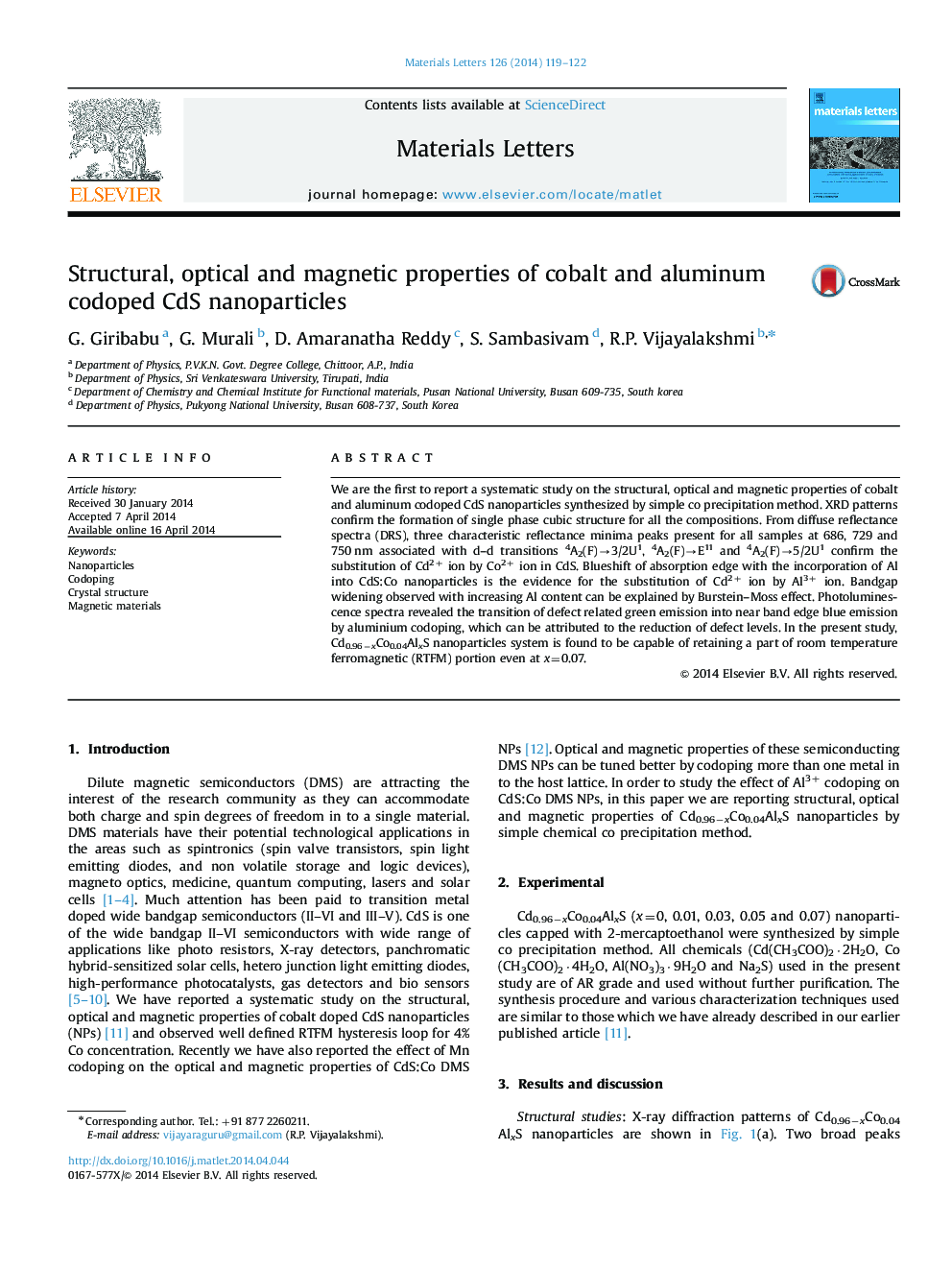| Article ID | Journal | Published Year | Pages | File Type |
|---|---|---|---|---|
| 1644228 | Materials Letters | 2014 | 4 Pages |
•We are the first to report on Co and Al codoped CdS DMS nanoparticles.•Bandgap widening with increasing Al content is explained by Burstein–Moss effect.•RTFM behaviuor of Co and Al codoped CdS DMS nanoparticles is studied.
We are the first to report a systematic study on the structural, optical and magnetic properties of cobalt and aluminum codoped CdS nanoparticles synthesized by simple co precipitation method. XRD patterns confirm the formation of single phase cubic structure for all the compositions. From diffuse reflectance spectra (DRS), three characteristic reflectance minima peaks present for all samples at 686, 729 and 750 nm associated with d–d transitions 4A2(F)→3/2U1, 4A2(F)→E11 and 4A2(F)→5/2U1 confirm the substitution of Cd2+ ion by Co2+ ion in CdS. Blueshift of absorption edge with the incorporation of Al into CdS:Co nanoparticles is the evidence for the substitution of Cd2+ ion by Al3+ ion. Bandgap widening observed with increasing Al content can be explained by Burstein–Moss effect. Photoluminescence spectra revealed the transition of defect related green emission into near band edge blue emission by aluminium codoping, which can be attributed to the reduction of defect levels. In the present study, Cd0.96−xCo0.04AlxS nanoparticles system is found to be capable of retaining a part of room temperature ferromagnetic (RTFM) portion even at x=0.07.
Graphical abstractFigure optionsDownload full-size imageDownload as PowerPoint slide
